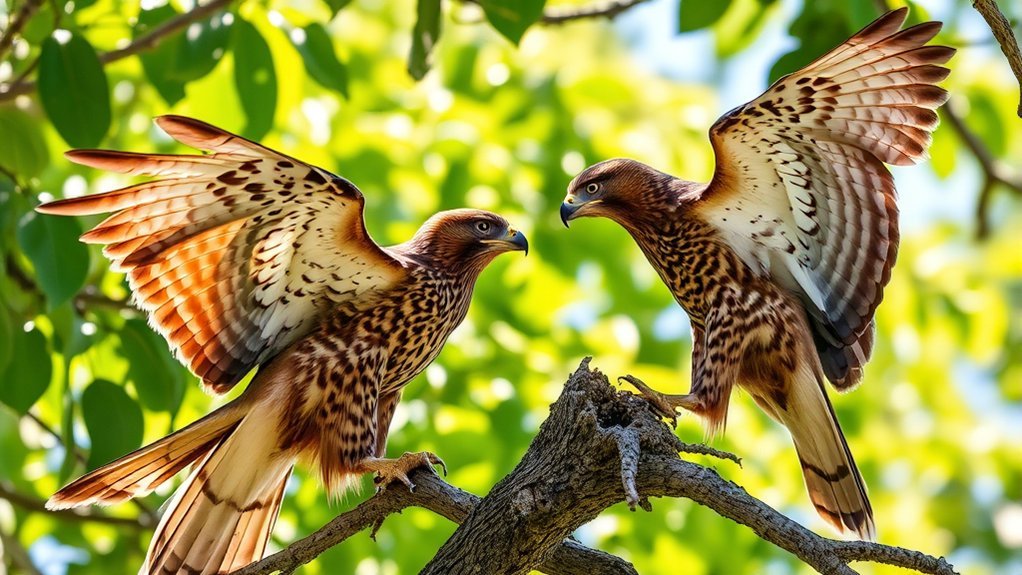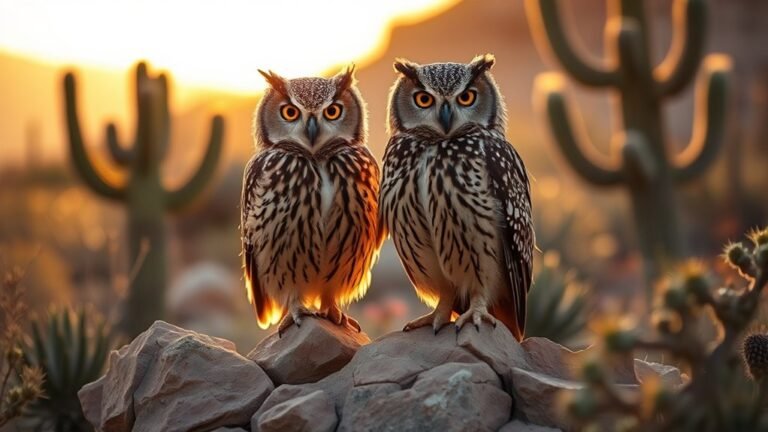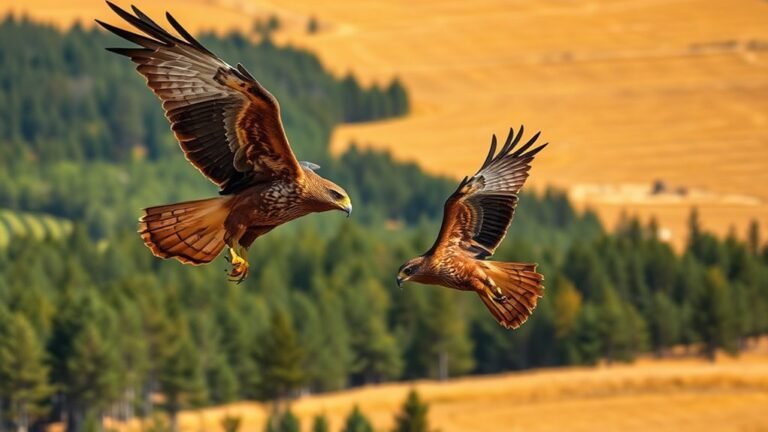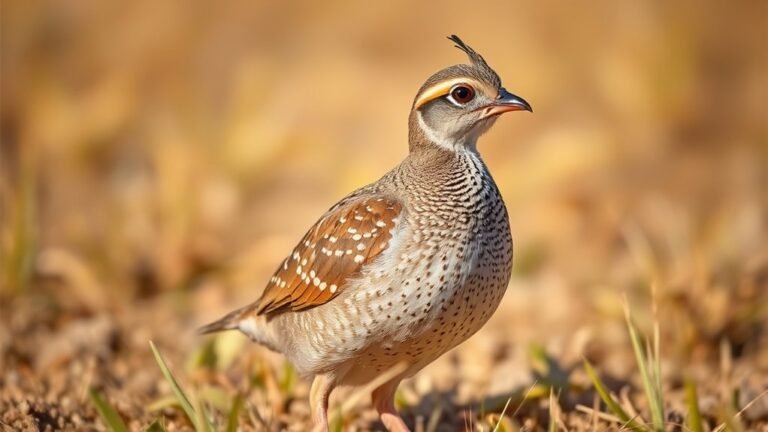Red-Tailed Hawk Vs Red-Shouldered Hawk: Key Differences Explained
When you look at the Red-Tailed Hawk and the Red-Shouldered Hawk, you can see some interesting differences. These birds of prey have their own special features, from how they look to how they act. Each hawk has traits that help it live and hunt in its environment. Learning about these differences helps us understand their importance in nature.
The Red-Tailed Hawk is larger, with a broad wingspan and a light belly. Its tail is red, which makes it easy to spot. This hawk usually hunts in open fields and soaring high in the sky. It likes to eat small mammals and sometimes birds.
On the other hand, the Red-Shouldered Hawk has a smaller size with a striking orange and brown pattern. It often hunts in wooded areas and near water. This hawk enjoys a diet mostly made up of frogs and small rodents.
Each hawk plays a unique role in its habitat. They help control the populations of their prey, keeping nature in balance. Learning more about these birds can be fun and helps us appreciate wildlife around us. So, what else do you want to know about these amazing birds?
A Quick Overview
Red-tailed hawks and red-shouldered hawks are two types of birds of prey, and they look different from each other.
Red-tailed hawks have reddish-brown tails and dark brown eyes. They are usually seen in open areas like fields. On the other hand, red-shouldered hawks have bold black and white patterns on their bodies and golden eyes. They like to live in forests and wet places.
When it comes to hunting, red-tailed hawks prefer to hunt alone or with a partner. In contrast, red-shouldered hawks often hunt in groups, especially when they migrate.
Their calls are also different. Red-tailed hawks make long, loud screams. Red-shouldered hawks, however, have a unique raspy sound that sounds like "kee-kee-kee."
When building their nests, red-tailed hawks usually choose high places in trees. Red-shouldered hawks prefer to nest in leafy areas and use mud to make their nests strong.
So, whether you're in a wide-open field or a thick forest, keep an eye out for these amazing birds!
Physical Characteristics Comparison

When you watch hawks in North America, you can see some cool differences between the red-tailed hawk and the red-shouldered hawk.
The red-tailed hawk has a bright reddish-brown tail and feathers that mix brown and white. This helps it blend into its surroundings.
On the other hand, the red-shouldered hawk has fancy feathers with bold black and white patterns. Its wings and chest are a nice reddish color.
Another difference is in their eyes. Red-tailed hawks usually have dark brown eyes, while red-shouldered hawks have lighter, golden eyes.
Knowing these differences can make your birdwatching experience more fun and help you connect with other bird lovers.
Habitat Preferences
Red-tailed hawks and red-shouldered hawks look very different, but they also live in different places.
Red-tailed hawks like open spaces, such as fields and grasslands. These areas help them hunt easily.
On the other hand, red-shouldered hawks prefer forests. They mostly live in trees, especially near rivers and wooded areas where they can find plenty of food and safety.
Red-shouldered hawks also like wet areas. Here, they can find small animals and frogs to eat.
Knowing where each hawk prefers to live helps us understand how they adapt to their homes and find their role in nature.
Behavior and Hunting Techniques

Red-tailed hawks and red-shouldered hawks are both interesting birds, but they've different ways of hunting and behaving.
Red-tailed hawks like to fly high in the sky. They use warm air currents, called thermal updrafts, to help them look for food from way up above. They usually hunt alone or sometimes with a mate during nesting season.
On the other hand, red-shouldered hawks prefer living in wooded areas. They're sneaky hunters. They quietly move through the trees, waiting to surprise smaller animals.
These hawks often hang out in groups, especially when they migrate.
Understanding how each hawk behaves can help you see how important they're in nature. Each one plays a special part in its environment.
Vocalizations and Calls
Vocalizations are very important for red-tailed and red-shouldered hawks. Their calls help them communicate and interact with each other. Knowing how these hawks sound can make it easier to tell them apart.
Here are some simple differences between their calls:
- Red-tailed hawk: This hawk has a long scream that goes down in pitch. You often hear this sound during mating or when defending their territory.
- Red-shouldered hawk: This hawk makes a series of loud, raspy "kee-kee-kee" calls. They use these to talk to their mates.
- Warning sounds: Both types of hawks have unique warning calls. They use these sounds to alert others about potential dangers.
- Different situations: The calls of red-tailed and red-shouldered hawks change based on what's happening, like mating, feeding, or warning about threats.
Understanding these calls can help you enjoy watching these birds even more!
Nesting Habits

Red-tailed hawks and red-shouldered hawks have different nesting habits that help them live in their homes.
Red-tailed hawks like to build their nests high up in tall trees or on cliffs. They choose strong and big places for their nests. These hawks use sticks, grass, and other plants to make their nests safe and cozy.
On the other hand, red-shouldered hawks prefer to make their nests in leafy forests. They also use sticks and plants but add mud to make their nests more stable.
Both types of hawks take about 28 to 35 days to hatch their eggs, and both parents help take care of the eggs.
Range and Distribution
Red-tailed hawks and red-shouldered hawks live in overlapping areas, but they've different homes and ways of moving around. Each species has its own special places they prefer.
- Red-tailed hawks can be found all over North America. They like open spaces, including woodlands, grasslands, and deserts.
- Red-shouldered hawks prefer living in leafy forests, mainly in the eastern United States and some parts of the Pacific Northwest.
- When it's time to migrate, red-tailed hawks fly long distances. In contrast, red-shouldered hawks often stay in the same place all year.
- You can see both types of hawks in southern areas where their ranges overlap.
Knowing these facts helps you understand where these birds live and the different habitats they call home. It can make you feel more connected to the birdwatching community!
Color Variations
Color differences between red-tailed and red-shouldered hawks are easy to spot, which helps birdwatchers identify them.
Red-tailed hawks have beautiful reddish-brown feathers on their backs and lighter, often speckled feathers on their bellies. These colors stand out in the sky.
Red-shouldered hawks, on the other hand, have a more complex look. They've bold rufous and white stripes on their shoulders and a tail that has striking bands.
These colors help tell them apart and show where they like to live and how they act.
Knowing these color patterns helps you appreciate the beauty of these birds.
This can make your birdwatching more enjoyable and deepen your connection to nature.
Size and Weight Differences
Red-tailed hawks and red-shouldered hawks are different in size and weight. Red-tailed hawks are usually bigger and heavier than red-shouldered hawks. Knowing these differences can help you spot them in nature.
- Wingspan: A red-tailed hawk has a wingspan of 45 to 52 inches. In contrast, a red-shouldered hawk's wingspan is smaller, ranging from 37 to 43 inches.
- Body Shape: Red-tailed hawks have bulkier bodies. Red-shouldered hawks are more slender in shape.
- Weight: Adult red-tailed hawks weigh between 1.5 to 3.5 pounds. Red-shouldered hawks generally weigh less, around 1.5 to 2.5 pounds.
- Perception: The size difference affects how we see their behavior and the places they choose to live.
These details help you understand and enjoy watching these amazing birds!
Conservation Status and Threats
Red-tailed hawks and red-shouldered hawks are both amazing birds. They play different roles in nature, and their sizes help show us how they live. But right now, we need to pay attention to their safety.
Both hawk types are in danger because their homes are disappearing. This happens because people build cities, farm land, and cut down trees. Red-tailed hawks are doing okay in most places, but red-shouldered hawks are not. They're becoming fewer in some areas.
It is important to help these birds. We can do this through habitat restoration, making rules to protect them, and teaching others about their needs. Working together is key to ensuring that these hawks flourish in their homes.
You can make a difference too! Join local groups that help protect nature, promote eco-friendly habits, and take part in cleaning up habitats. These actions support both hawk species and the places they live.
Let's help our feathered friends thrive!
Frequently Asked Questions
Can Red-Tailed and Red-Shouldered Hawks Interbreed?
Can red-tailed and red-shouldered hawks have babies together? It's a good question! Hawks usually don't mix breeds much because they are not very compatible. But sometimes, they do create hybrids. This shows us how interesting nature can be and how different birds can be within the hawk family. So, while it doesn't happen often, it is possible.
What Are Their Main Predators in the Wild?
In the wild, hawks have some big predators. Larger birds of prey, like eagles, can attack them. Some mammals, like foxes and raccoons, might also prey on young hawks or their eggs.
Hawks are smart hunters. They often use surprise to catch their food. With sharp eyesight, they can spot their prey from far away. This helps them stay alive and be successful in finding food.
Hawks are skilled at protecting themselves from these dangers. They can fly high and hide well. Their sharp beaks and strong claws help them defend against attacks. Overall, hawks are amazing birds that know how to survive in the wild.
How Do They Communicate With Each Other?
Red-tailed hawks and red-shouldered hawks communicate in different ways. Red-tailed hawks use loud calls to mark their territory. In contrast, red-shouldered hawks have a mix of different sounds to talk to each other. These sounds help each group stay organized and know where they belong. It's like having their own language!
What Role Do These Hawks Play in the Ecosystem?
Hawks play an important role in nature. They hunt small mammals, which helps keep those populations under control. This is good for the environment because it keeps the balance between different animals. When there are fewer small mammals, plants can grow better, which helps other animals too.
Hawks also build nests. These nests provide a safe place for their young. This helps keep their population stable, which is good for the ecosystem. By helping with these things, hawks ensure a healthy environment for themselves and many other creatures.
In short, hawks help balance nature and support the living space for various species. They are a key part of the ecosystem!
Are Red-Shouldered Hawks More Social Than Red-Tailed Hawks?
Red-shouldered hawks are more social than red-tailed hawks. They often pair up during breeding season. When they mate, they make sounds and show off to each other. This helps them bond and feel like a community.
In contrast, red-tailed hawks tend to be more solitary. They hunt and live on their own most of the time. Red-shouldered hawks enjoy being around others, while red-tailed hawks prefer their space.

Luna is the passionate founder and author of Birds and You, a website dedicated to sharing her love for birds with fellow enthusiasts. Through her engaging articles and guides, she aims to educate and inspire others to explore the fascinating world of birds. When she’s not writing, you can find Luna observing birds in their natural habitats or sharing beautiful bird photography on Pinterest. Join her on this journey to celebrate and protect our feathered friends!







